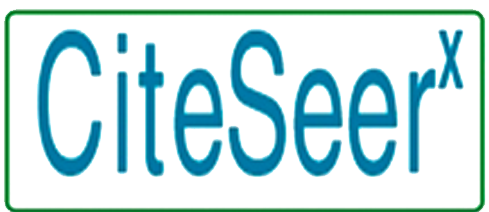Evaluating the total flavonoids, Reductive ability and antibacterial potentials of Salvia officinalis aqueous extract.
Abstract
four types of Bacteria were used in this study. Two Gram – and two Gram + (Staphylococcus aureus, Pseudomonas aeruginosa; Escherichia coli, Streptococcus). The reductive ability ( rutin) , and total flavonoids were increased as the concentration of extract was increased. Moreover, the antimicrobial of methanol extracts was also increased as the concentration increased. This study give an idea for this plant which had been used for a long time in folk medicine.
Downloads
References
2. Avato, P., I. M. Fortunato, C. Ruta and R. D’Elia (2005). "Glandular hairs and essential oils in micropropagated plants of Salvia officinalis L." Plant Science169(1): 29-36.
3. Barnes, J. and L. Anderson (2002). phillipson A.“Herbal medicines”, Pharmaceutical Press, London D.
4. Calixto, J. B. (2005). "Twenty-five years of research on medicinal plants in Latin America: a personal view." Journal of ethnopharmacology100(1-2): 131-134.
5. Chrpova, D., L. Kouřimská, M. H. Gordon, V. Heřmanová, I. Roubíčková and J. Panek (2010). "Antioxidant activity of selected phenols and herbs used in diets for medical conditions." Czech Journal of Food Sciences28(4): 317-325.
6. Cuppett, S. L. and C. Hall (1998). "Antioxidant activity of the Labiatae." Advances in food and nutrition research42: 245-272.
7. DEANS, S. G. and E. J. SIMPSON (2000). "12. ANTIOXIDANTS FROM SALVIA OFFICINALIS." The Genus Salvia: 185.
8. Dweck, A. (2000). "The folklore and cosmetic use of various Salvia species." Sage. The genus Salvia14: 1-25.
9. Egert, S. and G. Rimbach (2011). "Which sources of flavonoids: complex diets or dietary supplements?" Advances in Nutrition2(1): 8-14.
10. Flores Santurio, D., F. P. Kunz de Jesus, R. A. Zanette, K. Bizzi Schlemmer, A. Fraton and L. L. Martins Fries (2014). "Antimicrobial activity of the essential oil of thyme and of thymol against Escherichia coli strains." Acta Scientiae Veterinariae42(1).
11. Franco, M. N., T. Galeano-Díaz, Ó. López, J. G. Fernández-Bolaños, J. Sánchez, C. De Miguel, M. V. Gil and D. Martín-Vertedor (2014). "Phenolic compounds and antioxidant capacity of virgin olive oil." Food Chemistry163: 289-298.
12. Frey, F. M. and R. Meyers (2010). "Antibacterial activity of traditional medicinal plants used by Haudenosaunee peoples of New York State." BMC complementary and alternative medicine10(1): 64.
13. Fu, W., J. Chen, Y. Cai, Y. Lei, L. Chen, L. Pei, D. Zhou, X. Liang and J. Ruan (2010). "Antioxidant, free radical scavenging, anti-inflammatory and hepatoprotective potential of the extract from Parathelypteris nipponica (Franch. et Sav.) Ching." Journal of ethnopharmacology130(3): 521-528.
14. Giannouli, A. L. and S. E. Kintzios (2000). "Essential oils of Salvia spp: examples of intraspecific and seasonal variation." The Genus Salvia: 69.
15. Hippolyte, I., B. Marin, J. Baccou and R. Jonard (1992). "Growth and rosmarinic acid production in cell suspension cultures of Salvia officinalis L." Plant cell reports11(3): 109-112.
16. Hsu, C.-Y., Y.-P. Chan and J. Chang (2007). "Antioxidant activity of extract from Polygonum cuspidatum." Biological research40(1): 13-21.
17. Ibraheem, R., A. Mhawesh and K. Abood (2018). "ESTIMATION OF THE WHOLE FLAVONOID, ANTIOXIDANT, ANTI BACTERIAL CHALLENGE CONCERNING VIOLA ODORATA (BANAFSHA) METHANOLIC EXTRACT." The Iraqi Journal of Agricultural Science49(4): 655.
18. Keller, K. (1996). "Herbal medicinal products in Germany and Europe: experiences with national and European assessment." Drug information journal30(4): 933-948.
19. Khulood W. Abbood , R. M. I., Ali H. Ad'hiah. (2015). "Antioxidant activity of Hypericum triquetrifolium Turra methanol extract in vitro." International Journal of Medicinal Plants (Photon)108: 632-637.
20. Kintzios, S., A. Nikolaou and M. Skoula (1999). "Somatic embryogenesis and in vitro rosmarinic acid accumulation in Salvia officinalis and S. fruticosa leaf callus cultures." Plant Cell Reports18(6): 462-466.
21. Kintzios, S. E. (2000). The Genus Salvia, Hardwood Academic Publishers, Amesterdan, Netherlands.
22. L.-N. Li (2000). Salvianolic acids and related compounds, in: Kintzios,medicinal and aromatic plants—industrial profiles, Sage The Genus Salvia, , Harwood Academic Publishers, The Netherlands,.
23. Lu, Y. and L. Y. Foo (2001). "Antioxidant activities of polyphenols from sage (Salvia officinalis)." Food chemistry75(2): 197-202.
24. Madsen, H. L., G. Bertelsen and L. H. Skibsted (1997). "Antioxidative activity of spices and spice extracts."
25. Phillips, R. a. F., N. Editors (1990). Herbs. Pan Books Ltd. U.K.
26. R. M. I. Al-Ezzy, F. T. O. A.-J. a. N. K. A.-A. (2017). "Detection of Total Flavenoids, Reductive Ability, and Anti-microbial in Glycyrrhiza and Achillea Medicinal Plants." Journal of Biology and Life Science, 8(2).
27. Roqaya, M., K. Al-Samarrae and A. H. Ad'haih (2010). "Effect of sage (salvia officinalis) aqueous extract on mitotic index in albino male mice." Jornal of Biotechnology Research Center4(1): 36-43.
28. Sakanaka, S., Y. Tachibana and Y. Okada (2005). "Preparation and antioxidant properties of extracts of Japanese persimmon leaf tea (kakinoha-cha)." Food chemistry89(4): 569-575.
29. Santos-Gomes, P. C., R. M. Seabra, P. B. Andrade and M. Fernandes-Ferreira (2002). "Phenolic antioxidant compounds produced by in vitro shoots of sage (Salvia officinalis L.)." Plant Science162(6): 981-987.
30. ULUBELEN, A. (2000). "III. CHEMICAL CONSTITUENTS 4. TERPENOIDS IN THE GENUS SALVIA." The Genus Salvia: 55.
31. Venkatachalam, K., R. Kjonaas and R. Croteau (1984). "Development and essential oil content of secretory glands of sage (Salvia officinalis)." Plant physiology76(1): 148-150.
32. Ziad, D., A. Elias and A.-M. Roula (2011). "Antibacterial activity of Rheum rhaponticum, Olea europaea, and Viola odorata on ESBL producing clinical isolates of Escherichia coli and Klebsiella pneumoniae." International Journal of Pharmaceutical Sciences and Research2(7): 1669.
Copyright (c) 2019 GPH - International Journal of Biological Science →

This work is licensed under a Creative Commons Attribution-NonCommercial-NoDerivatives 4.0 International License.
Author(s) and co-author(s) jointly and severally represent and warrant that the Article is original with the author(s) and does not infringe any copyright or violate any other right of any third parties, and that the Article has not been published elsewhere. Author(s) agree to the terms that the GPH Journal will have the full right to remove the published article on any misconduct found in the published article.
























